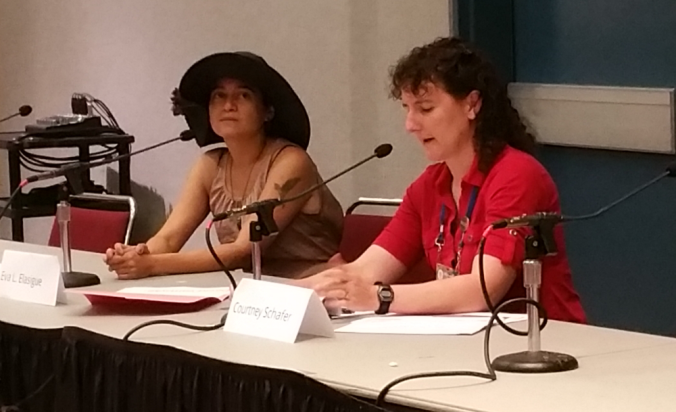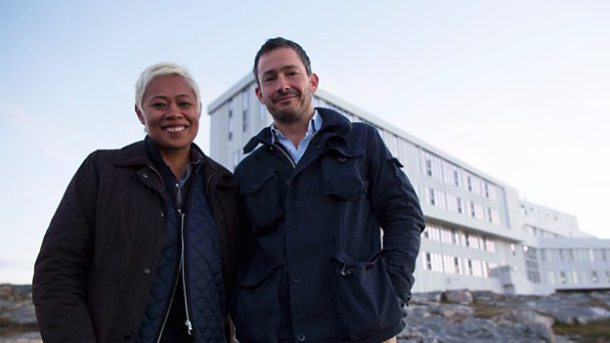
Before even seeing an episode of BBC Two’s Amazing Hotels: Life Beyond The Lobby, I was hooked in by the notion of exploring places and other lives that were probably beyond my everyday reach. The thought of posh hotels, with an extra something special, in worldwide locations was something that really got my over-excited persona and travel-intrigue-animal tingling with expectancy. What I didn’t know was how differently the series would explore these unique hotels because hosts Monica Galetti and Giles Coren get stuck in with the workers, embrace the ethos of the businesses and create six fascinating programmes that offer us a chance to understand why these places exist and how they impact the local communities, and usually in a positive, substantial manner.
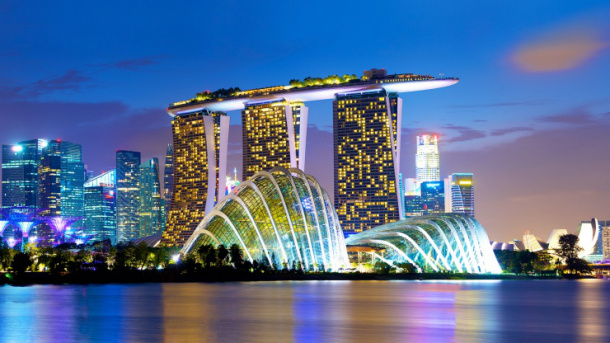
Over those 6 episodes, the duo travel from Singapore to Sweden, from Ecuador to Morocco, and also Canada to Kenya with each individual hotel analysis offering its own story. We begin at the lavish, and microcosm of an entire city, Marina Bay Sands hotel in Singapore, where we’re given an insight into the jobs created around the 2,561-room hotel that cost over nearly $4 billion (!) to make, invest in and build. This is one of those hotels that you’d only stay in for a night, especially due to the cost, but you’d probably do it just to experience the SkyPark which sits atop of the three-tower structure and is a three-acre park with swimming pools, gardens, and opportune moments for relaxing and embracing the selfie-culture from its 656ft high infinity pool.
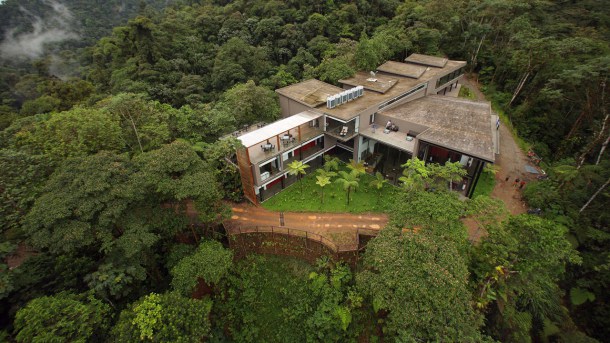
The second show heads to Mashpi Lodge in the cloud forests of Ecuador and completely alters perception of why someone would want to build there. While it’s true a lot of the hotels featured in the series are very expensive to stay in, it’s clear that this Lodge is not only friendly to the environment around, it even merges into the forest rather than pushing it away. It’s the passion project of Roque Sevilla, a former Mayor of the city of Quito, creator and main shareholder of the site, who bought the the 1,200-hectare (3,000-acre) private reserve from the logging companies to stop it being all chopped down. It’s a belief system and helps locals with both jobs and conservation, all wonderfully achieved.
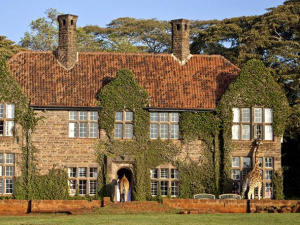 Next up we move to Kenya and Giraffe Manor, where you can stay and feed their local, still with wild intent, Giraffes from your breakfast table – should you wish. Although the Hotel itself wasn’t my favourite of the series, it’s your classic country 1930s English hotel in design, the story outside of the complex was one of intrigue and reward. Once they get out food shopping in the Nairobi suburb of Rongai, you start to get a look at the real Kenya and the people who live and work there. Monica and Giles head further out to the Sasaab Lodge, which is a a six-acre plot set within 82,000 acres of land owned by Samburu tribespeople, and we learn they maintain it all. Both presenters also experience more about tribal life, plus try to find out how the hotel impacts lives and even earn Giles the nickname ‘chubby mzungu‘ – You’ll have to watch to enjoy!
Next up we move to Kenya and Giraffe Manor, where you can stay and feed their local, still with wild intent, Giraffes from your breakfast table – should you wish. Although the Hotel itself wasn’t my favourite of the series, it’s your classic country 1930s English hotel in design, the story outside of the complex was one of intrigue and reward. Once they get out food shopping in the Nairobi suburb of Rongai, you start to get a look at the real Kenya and the people who live and work there. Monica and Giles head further out to the Sasaab Lodge, which is a a six-acre plot set within 82,000 acres of land owned by Samburu tribespeople, and we learn they maintain it all. Both presenters also experience more about tribal life, plus try to find out how the hotel impacts lives and even earn Giles the nickname ‘chubby mzungu‘ – You’ll have to watch to enjoy!
The explorations aren’t just about being there either as Monica and Giles both pitch in with the day-to-day work. Although Giles is a critic and writer, he likes to get involved (as you may have previously seen in his work with Sue Perkins) and get hands on but it’s Monica Galetti who won me over, as she was someone I knew less about despite being aware of her work on MasterChef: The Professionals. I adored her energy for everything that came her way and as, obviously, a superb chef herself, she took to getting involved with the kitchens in every location and seeing what they presented and how they used local sources in unique ways. Throughout the adventures, it’s really great to get deep inside everything going on.
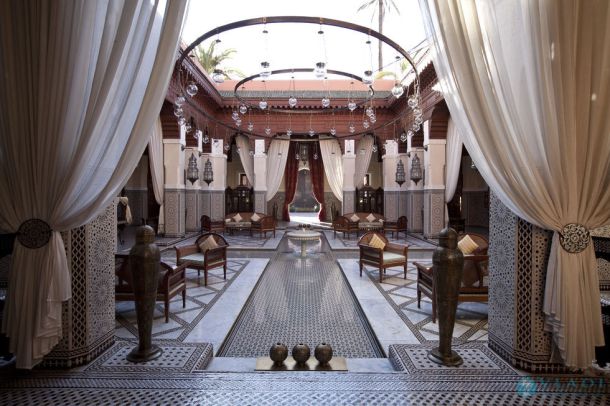
Episode four headed to the Royal Mansour in Morocco, which is famous for being ‘discreet’ despite being hidden in the middle of Marrakech’s ancient Medina. They’re a hotel who host billionaires, world leaders and celebrities but also has the bonus of an unlimited budget because it’s built by royal decree and they’re out to impress to influential people. What’s interesting about this is how the butlers live a life that’s almost unseen as they ‘disappear’ in and out of rooms by using underground tunnels to service the guests. You also see their utter commitment to the cause, because it’s offering them a well-paid job to give their families a better life. Monica also gets to visit local Berber women who pick saffron to sell back to the hotel and so although there’s (beyond) a wealth of money being spent at the Mansour, without the work these women wouldn’t earn money to live. It’s clear it’s all a very delicate balance.
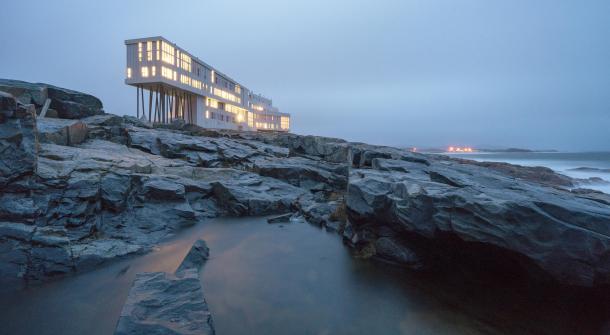
The Fogo Island Inn was one of my favourites when we get to episode 5 and this is mainly because it’s such an extreme project in Canada, but it also has the finest sense of community. Built on the edge of a remote island in Newfoundland, the people who settled there have one of the best accents I’ve heard which is described as Irish, Canadian with a hint of Dorset and you can really hear it all clearly. The people here are lovely and while the primary income used to be Cod fishing, overfishing by everyone saw their livelihoods decline and people started to move away and towards bigger Canadian cities. Zita Cobb owns and built the hotel from a vision to bring people back to her home, she’d previously moved away and had a successful career but longs to bring back life to the home she loves. There’s so much passion here and you feel Monica and Giles fall for what they’re experiencing and I did as well – I have to get there one day, somehow!
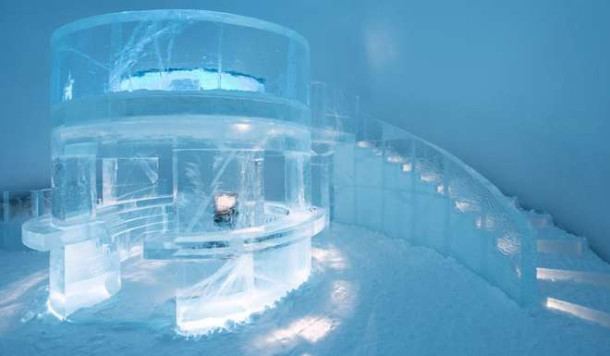
Finally, we reached the famous ICEHOTEL in Sweden and although originally just a seasonal-only hotel – due to the Earthly fact that ice melts – they’ve also now built ICEHOTEL 365 which is exactly as it sounds, the world’s first Ice Hotel that’s open all year through tremendous leaps and inventions in technology. In this hotel, they got to sleep in -5 conditions, make snow angels, jump in hot tubs and once again feel the enthusiasm of the creative heart of the hotel in the shape of Arne Bergh and those who work there. His belief in what he’s doing, and the desire to keep it both traditional and sustainable is something to be inspired by. You also get to admire the individually crafted rooms designed by artist who come from all over the world to share their vision, it’s a very collaborative place which, in truth, is a reflection of every place they visit.
Truly inspiring, very exciting, eye-opening and fuelling a never-waning Wanderlust, I highly recommend catching a few episodes while you still can on BBC iPlayer, right here: www.bbc.co.uk/AmazingHotels Advertisements Share this:- More




